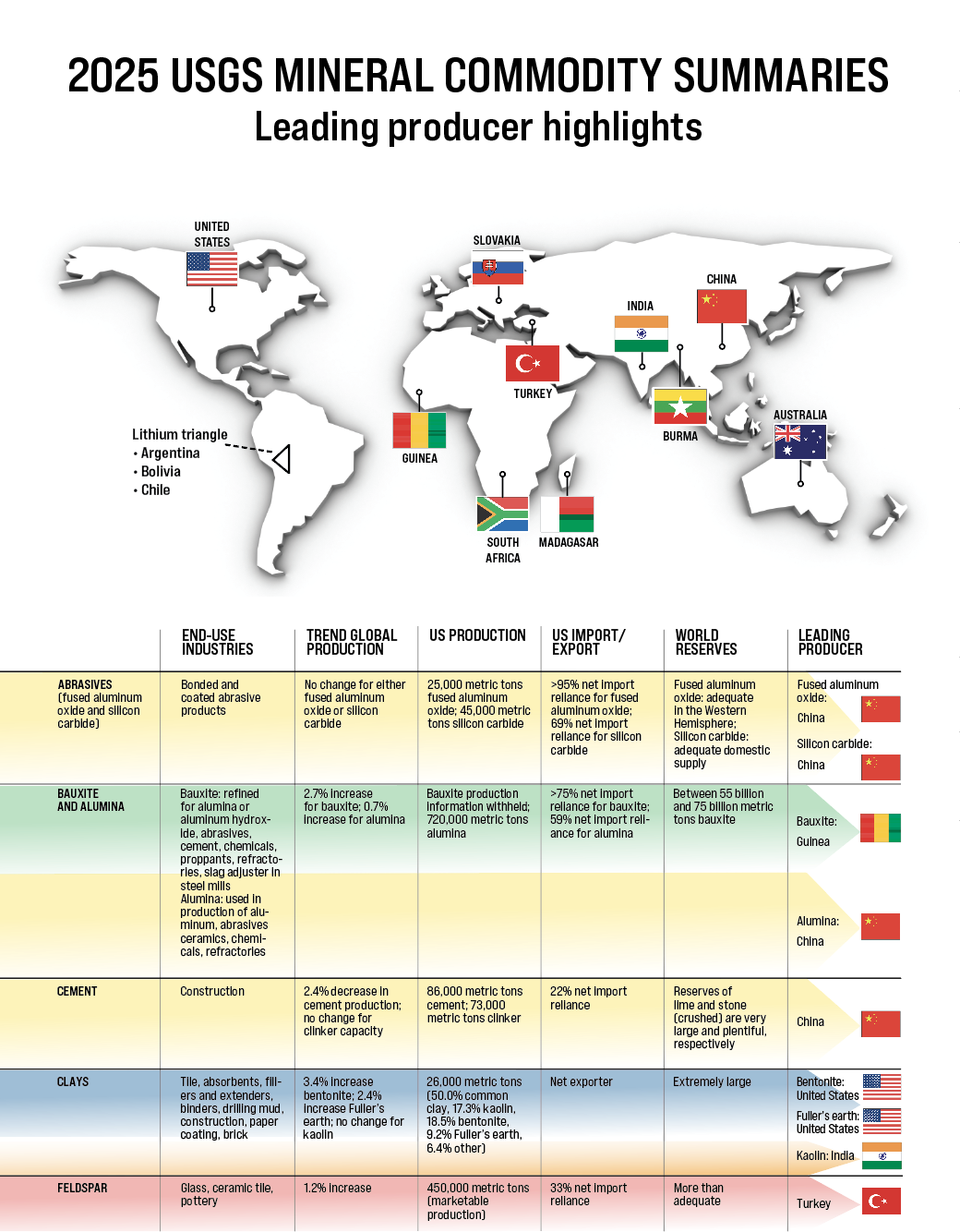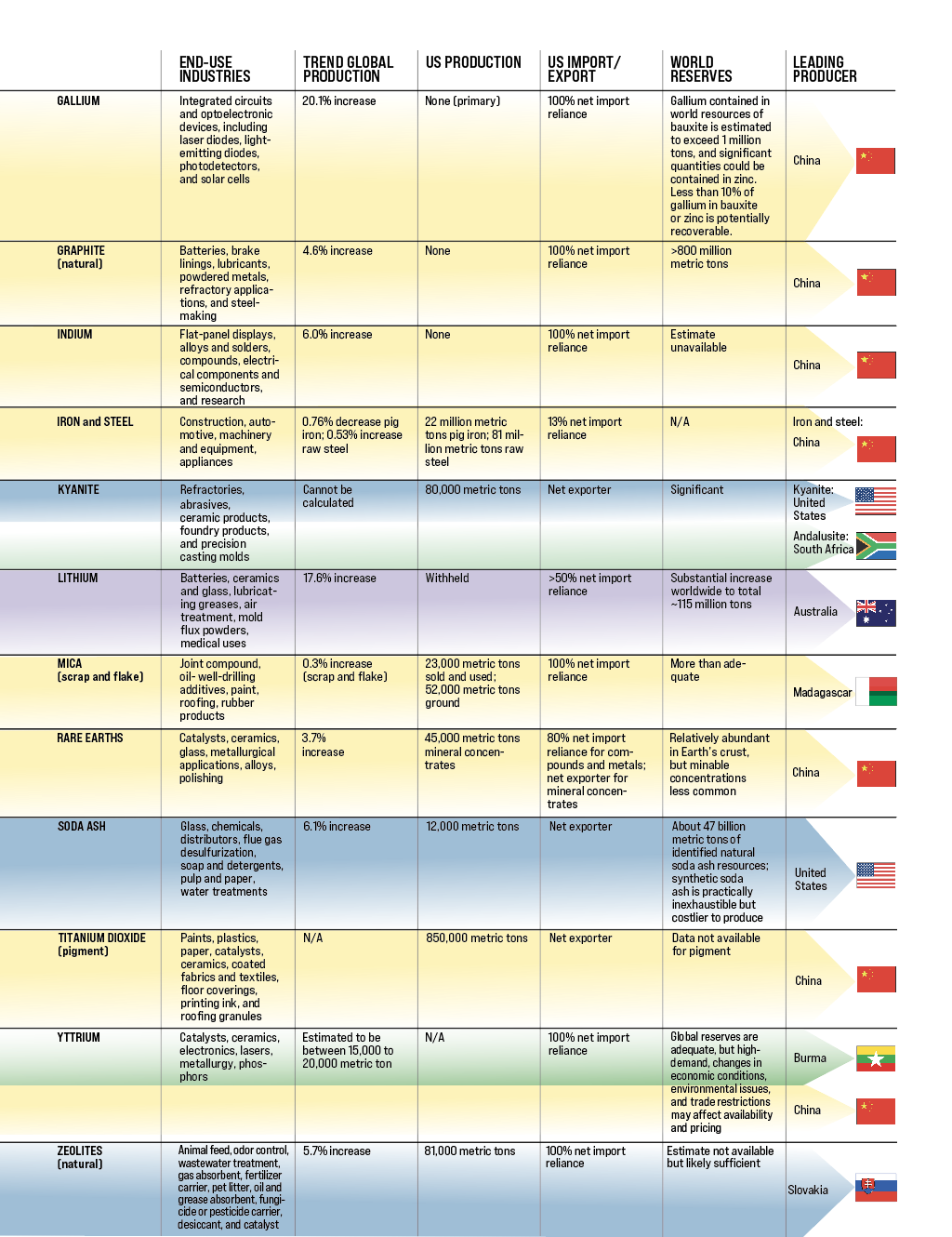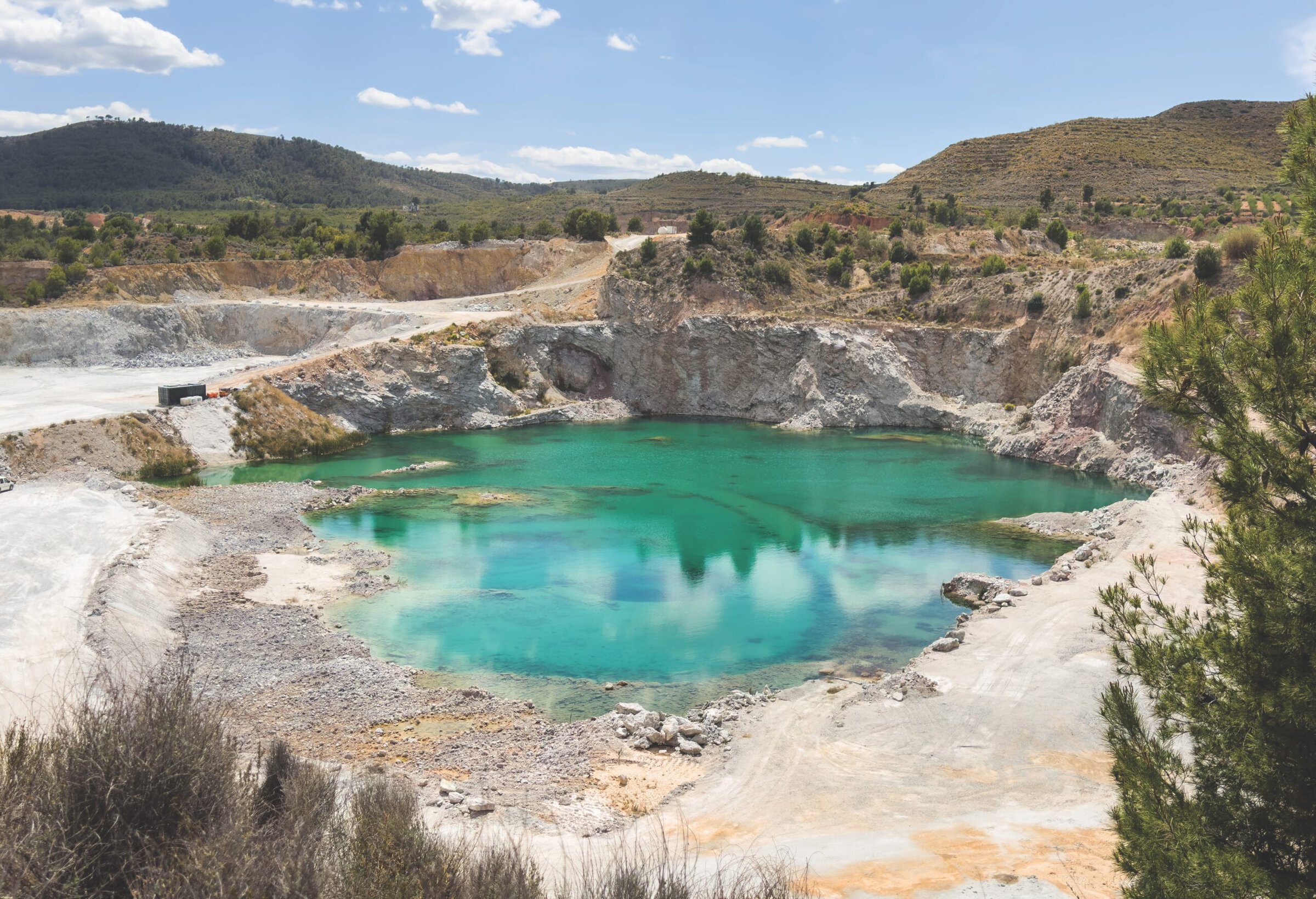A burgeoning trade war with China has led the U.S. government to continue investing in domestic production of certain minerals and materials, as reported in the annual United States Geological Survey Mineral Commodity Summaries.1
The USGS Mineral Commodity Summaries report spotlights events, trends, and issues from the past year in the nonfuel mineral industry. Each August, the ACerS Bulletin shares some of the key facts covered in the report.
In 2024, the total value of nonfuel mineral production in the United States was estimated to be $106 billion, an increase of nearly 1% from $105 billion in 2023. The total value of industrial minerals production was $72.1 billion, which is no change from the revised total of 2023. Of this total, $38 billion came from construction aggregates production, including construction sand, gravel, and crushed stone. Crushed stone accounted for the largest share of total U.S. nonfuel mineral production value in 2024 with 24%.
Continuing the trend from last year, the metals sector saw significant decreases in production due to global oversupply. Metals such as cobalt, lithium, and nickel saw decreases of 40–60% compared to 2023 as many other metal-producing countries reduced prices. On the other hand, the industrial minerals sector again saw increased production values for aggregates due to higher prices.
As a continuation of the U.S. government’s goals to expand the domestic mining sector, several congressional acts, investments, and projects were passed or launched in 2024. For example, the Department of Defense (DOD) awarded more than $400 million through the Defense Production Act Investments program to U.S.-based projects that aim to establish domestic manufacturing capacities for critical minerals production. The DOD also announced awards of more than $40 million to Canadian companies to support the United States–Canada Joint Action Plan on Critical Minerals.
Even with these developments, the U.S. still relies heavily on foreign sources for certain raw and processed mineral materials. In 2024, the U.S. was 100% reliant on 12 out of 50 individually listed critical minerals, as well as more than 50% net import reliant on 28 more critical mineral commodities. The recycling of antimony, bismuth, chromium, germanium, magnesium metal, tin, tungsten, and vanadium served as the only source of domestic supply for these materials.
The five-year period of 2020–2024 showed declined consumption for many mineral commodities. This decline indicates some substitutions may be in use for certain materials or that less products are being produced with raw mineral commodities. The largest decreases of more than 25% were seen with thallium, asbestos, bauxite, bismuth, industrial diamond (stones), and strontium.
Considering these trends, the U.S. Department of Energy announced a $75 million project in April 2024 to construct a Critical Minerals Supply Chain Research Facility funded by the Bipartisan Infrastructure Law.2 Moreover, legislation such as the Critical Minerals Security Act of 20243 and National Critical Minerals Council Act4 were introduced to help keep track of all global critical mineral and rare earth element activities and implement a national critical minerals strategy, respectively.4
Regarding the ongoing trade war with China, in May 2024, President Joe Biden raised tariffs on electric vehicles, solar cells, steel, aluminum, and metal equipment from China.5 That December, China issued export bans on antimony, gallium, and germanium.6 In response, the United States Trade Representative began a Section 301 investigation on China regarding their dominant role in the semiconductor industry.
The table below summarizes some of the statistics and trends for a variety of mineral commodities that serve the ceramic and glass industries. Access the complete USGS report at https://doi.org/10.3133/mcs2025.


Cite this article
H. Widman, “US government expands domestic supply chain efforts amid trade strains,” Am. Ceram. Soc. Bull. 2025, 104(6): 47–49.
About the Author(s)
Helen Widman is content coordinator at The American Ceramic Society (Westerville, Ohio). Contact Widman at hwidman@ceramics.org.
Issue
Category
- Art, archeology, and conservation science
- Energy materials and systems
Article References
1Mineral Commodity Summaries 2025, U.S. Geological Survey, Reston, Va., 2025.
2“DOE’s top clean energy accomplishments in 2024,” Department of Energy, 23 Dec. 2024.
3“S.3631–118th Congress (2023–2024): Critical Minerals Security Act of 2024.” Congress.gov. Published 21 Nov. 2024.
4“S.5030–118th Congress (2023–2024): National Critical Minerals Council Act.” Congress.gov. Published 12 Sept. 2024.
5S. Mistreanu, “A timeline of US-China tit-for-tat tariffs since Trump’s first term,” AP News. Published 10 Feb. 2025.
6A. Lv and T. Munroe, “China bans export of critical minerals to US as trade tensions escalate,” Reuters. Published 3 Dec. 2024.
*All references verified as of June 19, 2025.
Related Articles
Bulletin Features
Sintered synthetic cristobalite: Innovative kiln-based thermal transformation of quartz
Cristobalite, a high-temperature polymorph of silica, is widely used in ceramics, glass, paints, refractories, and dental materials due to its low density, high whiteness, thermal expansion behavior, and mechanical stability. Traditional cristobalite production methods rely on static sintering of finely ground quartz at high temperatures (~1,750°C) for extended durations (2–3…
Market Insights
Bioactive glass continues to transform medical care decades after first hitting the market
Almost 60 years ago, a chance meeting led to pioneering work that has improved medical care and seeded future innovations. In the late 1960s, a young professor named Larry Hench traveled to a conference in Sagamore, N.Y., where he happened to sit next to a U.S. Army colonel who was…
Market Insights
Sustainable development and design: Inspiration from landscape-shaping creatures
Animals are not just passive inhabitants of their environment. Many are architects of the natural world, actively shaping landforms and water bodies as they move around, feed, build homes, and reproduce. This impact by animals on different biomes has traditionally been overlooked in the environmental sciences. But scientists and engineers…




